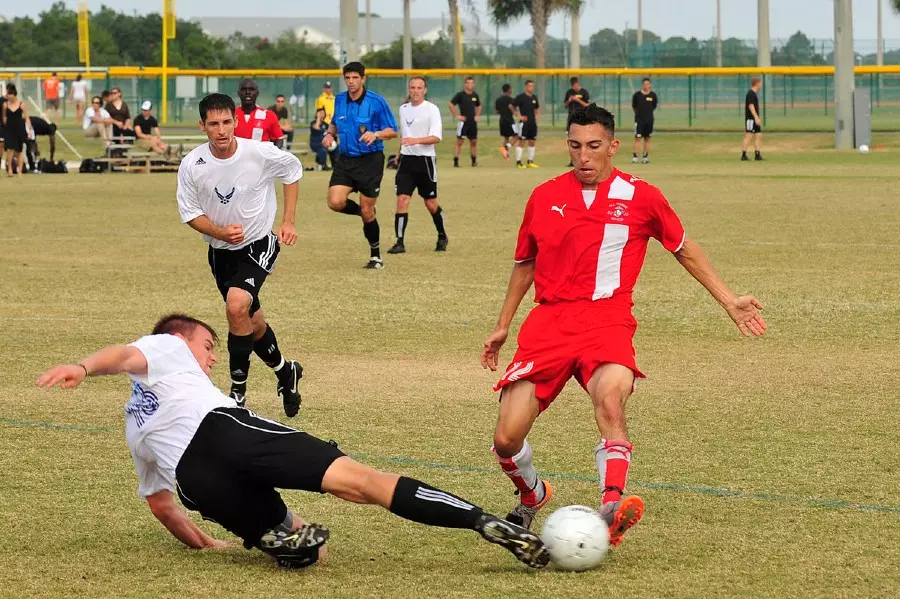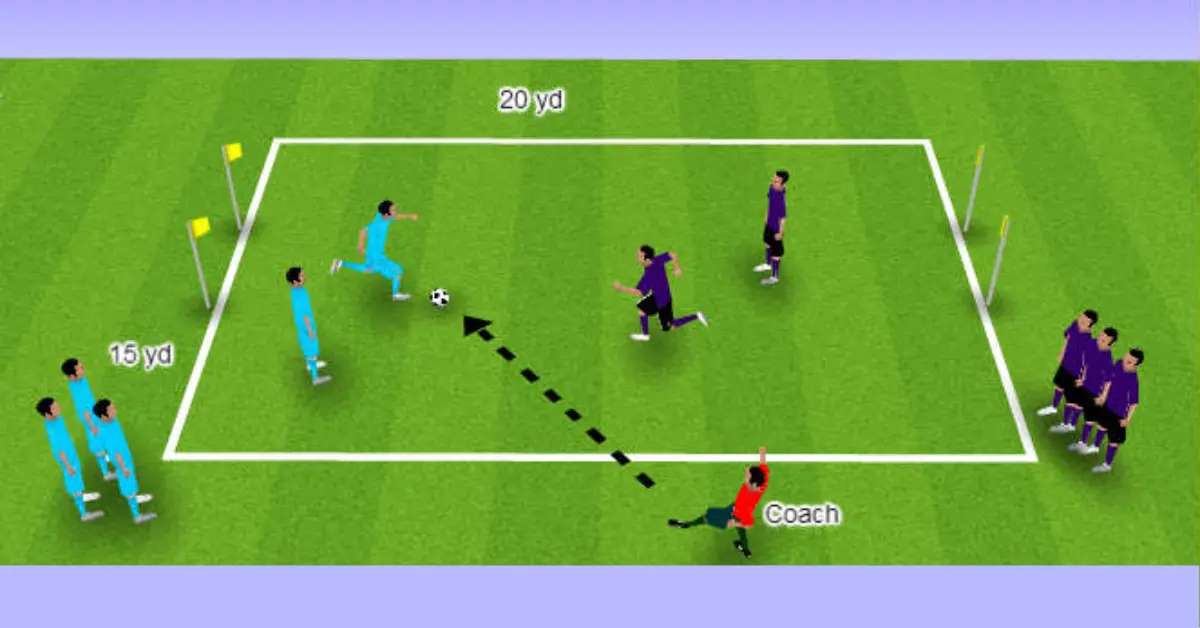What Is Tackling In Soccer? Definition, Stats, & Facts
Tackling in soccer is pretty dangerous, although it is an essential component of the game. it involves players trying to win possession of the ball from their opponents by means of physical challenges. But there are many rules involved regarding what can be counted as tackling in soccer.
Tackle is actually the physical challenge of a player who is trying to stop the opponent and for getting the ball. It is illegal to tackle with your arms and hands, although you can use your legs, shoulder, and even head. However, those need to be under legal rules.
Great soccer referees are known for their unique ways of handling any illegal tackling situation on the ground. However, good soccer defenders look for newer ways to execute legal tackles.
What Is Tackling In Soccer?
A tackle in soccer is a physical challenge made by a defending player to dispossess an opposing player of the ball. It is a legal way of winning possession of the ball and can be done using any part of the body except the arms and hands.
Tackling is an essential aspect of soccer as it allows defenders to stop the progress of the attacking team and regain possession of the ball.
Bonus: What Are Caps In Soccer? Definition, History, & Stats
FIFA’s Guidelines On Tackles
FIFA has set guidelines to help referees determine what constitutes a fair tackle and what is deemed a foul. And this guideline is quite transparent and has a set of rules.
According to FIFA’s Laws of the Game, a tackle is considered legal if the defending player makes contact with the ball before making contact with the opposing player.
A tackle that is made without making contact with the ball and instead contacts the opposing player first is considered a foul.
Three Basic Types Of Tackles In Soccer
Although there are many kinds of tackles performed by great soccer players on the ground, there are basically three basic types of tackles in soccer:
- Slide Tackle: This tackle involves sliding along the ground to dispossess the opposing player of the ball. It is commonly used when the attacking player is running with the ball and is difficult to dispossess using other methods.
- Standing Tackle: This tackle is executed while the defending player is on their feet. It involves timing the challenge correctly to win possession of the ball from the opposing player.
- Block Tackle: This tackle is used to block a shot or a pass from the opposing player. It is executed by placing the foot or leg in the path of the ball to stop it from reaching its intended target.
Shoulder-To-Shoulder Challenge In Soccer
A shoulder-to-shoulder challenge, also known as a fair charge, is a physical challenge made by a defending player to an opposing player using their shoulder against the opponent’s shoulder.
This type of challenge is legal if it is executed without excessive force and the ball is within playing distance. Some of the great soccer goalkeepers are known for their precise shoulder charges inside the penalty box.
Read More: Why Is Soccer So Popular? Stats And Facts Behind It
Illegal Tackles In Soccer
Tackling is an art that not every soccer player can master. While you can execute tackles under legal boundaries, some tackles are considered illegal in soccer, and they include:
- Dangerous Tackles: A tackle that endangers the safety of an opposing player is deemed illegal. This includes tackles that are executed with excessive force, high up on the opponent’s leg, or from behind.
- Tackles From Behind: Tackles made from behind are considered illegal as they can cause serious injuries to the opposing player.
- Tackles That Impede Progress: A tackle that impedes the progress of an opposing player without making contact with the ball is deemed illegal.
Some top soccer leagues are known for witnessing more tackles than others, primarily due to their style of play. Even the iconic El Clasico matches between Real Madrid and Barcelona are known for an excessive number of tackles.
Top 5 Players With The Most Tackles In International Football
At the club level, south American football clubs and English sides are known for more tackles than other top leagues. And at the international level, Spanish players are known for their body tackles.
The following table shows the top five players with the most tackles in international football:
| Player | Tackles |
| Javier Mascherano | 578 |
| Sergio Busquets | 502 |
| Idrissa Gueye | 482 |
| Blaise Matuidi | 465 |
| Fernandinho | 455 |

Risks Of Tackles Inside The Penalty Box
Tackles inside the penalty box are particularly risky as they can result in a penalty kick for the opposing team. Additionally, if the tackle is deemed illegal or dangerous, the player may receive a yellow or red card.
There are many such popular soccer goals that came as a consequence of poor tackles by opponents. Even some of the best last-minute goals also came this way!
You May Like: How Long Is A Soccer Game? Guidelines, Facts, & Records
Reasons To Receive A Yellow Or Red Card While Tackling
Although the final judgment entirely relies on the match officials (primarily referees), there are several reasons why a player may receive a yellow or red card while tackling, including:
- Excessive Force: If the tackle is executed with excessive force, the player may receive a red card.
- Endangering Safety: If the tackle endangers the safety of the opposing player, the player may receive a red card.
- Reckless Challenge: If the tackle is deemed reckless and endangers the safety of the opposing player, the player may receive a yellow or red card.
- Professional Foul: If the player commits a foul to prevent an opposing player from scoring a goal, they may receive a yellow or red card.
Some of the best Italian soccer clubs are known for generating more illegal tackles than other clubs participating in other top-tier leagues. It is mainly due to the defensive style of Italian football.
Top 5 Players With Most Red & Yellow Cards In Soccer
While many people believe that tall soccer players get an advantage while tackling, many people also believe that shortest soccer stars are better at tackling because of their stoutness.
The following table shows the top five players with the most red and yellow cards in soccer:
| Player | Red Cards | Yellow Cards |
| Sergio Ramos | 25 | 197 |
| Gerardo Bedoya | 46 | 118 |
| Cyril Rool | 10 | 119 |
| Marco Materazzi | 16 | 106 |
| Pablo Alfaro | 18 | 101 |

Step-By-Step Guide On How To Execute A Legal Tackle
If you are a budding soccer star and want to perfect your tackling techniques, we have a comprehensive plan for you. Here is a step-by-step guide on how to execute a legal tackle:
- Step 1: Anticipate the opposing player’s movement and position yourself accordingly.
- Step 2: Time the tackle correctly to ensure that you make contact with the ball before making contact with the opposing player.
- Step 3: Aim for the ball and avoid making contact with the opposing player’s legs, which can be dangerous and result in a foul.
- Step 4: Use your body to block the opposing player’s progress and win possession of the ball.
- Step 5: After executing the tackle, quickly regain your balance and position yourself to receive the ball or defend against the next attack.
If you are training under good sports academies, follow the instruction of your coach to perfect your tackling techniques. They will guide you depending on your playing style.
Popular Post: How To Juggle A Soccer Ball – Best Techniques And Practices
Conclusion
Tackling in soccer is an essential component of the game, and it requires skill, timing, and physicality. It is a legal way of winning possession of the ball from the opposing team. However, certain tackles are deemed illegal, and they can result in penalties, yellow or red cards, or even serious injuries to opposing players.
By following FIFA’s guidelines and executing legal tackles, players can play the game safely and effectively while contributing to their team’s success. So, that’s all we have to say about tackling in soccer. Feel free to drop your queries and start a conversation with us in the comment box below.

